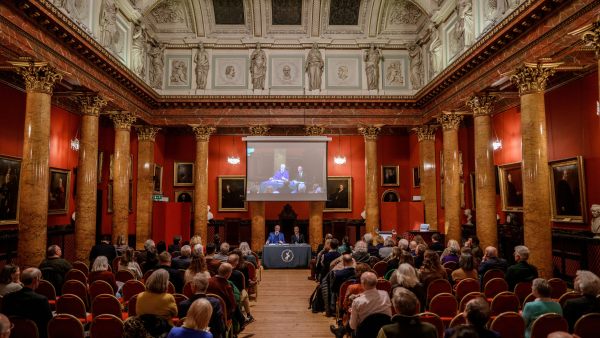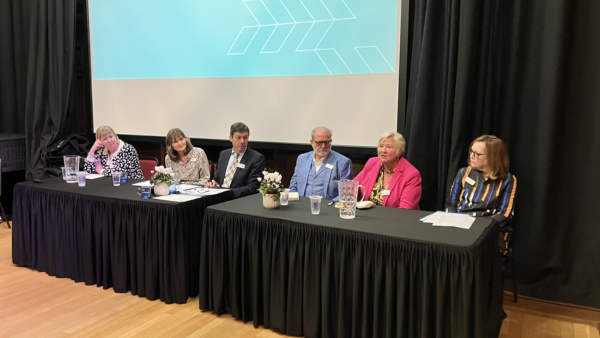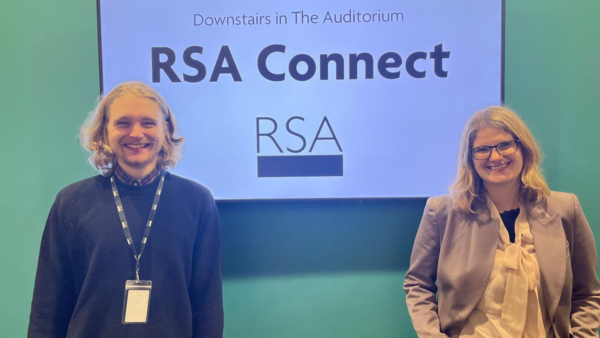In 1761 the painter Francis Hayman and his artist friends asked the Society of Arts to host another exhibition of contemporary art. After the crowds of the first exhibition, this time they demanded an entry fee to keep out the unmoneyed rabble.
In 1761 the painter Francis Hayman and his artist friends asked the Society of Arts to host another exhibition of contemporary art. After the crowds of the first exhibition, this time they demanded an entry fee to keep out the unmoneyed rabble.
But their proposed entry fees were repeatedly rejected. The wider membership of the Society of Arts likely opposed entry fees because they might be seen as for the private benefit of the artists, rather than for the public good (and with good reason, as the artists' profits from the 1760 exhibition had not quite found their way to the promised charitable causes).
Despite proposing entry fees again and again, the artists could never quite muster a decisive majority at the Society's meetings. It is worth noting that the Society in those days was essentially a direct democracy - so long as you paid the membership fee, you had an equal vote in literally everything the Society did. While Hayman and the artists had had initial success in capturing it, however, the Society's leaders also had ways to prevent a determined interest group from taking over completely.
The Society's leaders repeatedly postponed discussion whenever votes were likely to be too close, or when discussion became too heated. They also required every resolution of the Society to be confirmed at the following week's meeting. These rules meant the artists had to turn up to meetings week after week and in sufficient numbers to get the results they wanted.
Thwarted, in 1761 Hayman and his friends simply gave up and left, holding a separate exhibition just a few minutes' walk down the road at an auction house at Spring Gardens (just off Trafalgar Square), where they charged for entry. They came to style themselves (somewhat confusingly) "The Society of Artists of Great Britain" (SAGB), to stress that their profits would go to patriotic causes. Meanwhile, some of the artists continued to exhibit at the Society of Arts, where entry remained free. This group came to call themselves (even more confusingly) the "Free Society of Artists". Both societies were within a few years riven by further infighting.
Yet despite the repeated splits, public exhibitions of contemporary art became permanent and popular fixtures of London's cultural scene. More than that, they captured the imagination of the country's most important patron: the young king George III. In 1768, when Hayman and his friends were forced out of their positions of power at the SAGB by the continued infighting, they personally appealed to the king. In response, in December of 1768 George III established the Royal Academy of Arts (effectively a splinter of a splinter group from the original artists who exhibited at the Society of Arts in 1760). While the exhibitions of the SAGB and FSA limped on for a few more years, the exhibitions of the Royal Academy have continued to this day. In fact, they are holding their 250th anniversary exhibition right now.
Our historian in residence, Anton Howes, is currently writing a complete history of the RSA. If you're interested in finding out more, please email him at Anton.Howes@rsa.org.uk.
Related news
-
The 2024 Angus Millar Lecture
Fionna Monk
The 2024 Angus Millar Lecture was led by award-winning novelist Andrew O’Hagan on the theme of 'Art, Literature and Truth in the Era of Fake News, Algorithms and Artificial Intelligence'.
-
Facing the future: Scotland's challenges
Fionna Monk
On 26 November 2024, RSA Scotland discussed Scotland’s future with nine engaging speakers addressing various challenges facing the country. The venue was resonant – a former committee room at the French Institute used in its early days by the Scottish Parliament. This successful event was chaired with deftness and humour by the former Presiding Officer at the Parliament, Rt Hon Ken Macintosh.
-
Strengthening Fellows' global and local connections
Line Kristensen Fionna Monk
From our online global community platform Circle to enhanced local co-working spaces and personalised communications, we’re doing all we can to facilitate engagement with the RSA.



Join the discussion
Comments
Please login to post a comment or reply
Don't have an account? Click here to register.
So important that the arts remain as free and therefore accessible to everyone. It enriches people’s lives and hopefully their minds and money will only close it down even more to those who would not set foot into a gallery. Those of us who can should support the arts since we will all hopefully benefit as a society and civilisation.